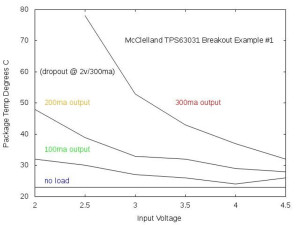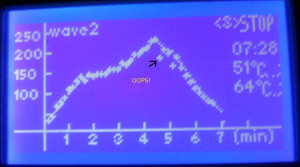For those using Linux or something functionally equivalent for “Arduino development”, Tim Marston’s Arduino make file makes a wonderful tool. Apart from saving lots of mouse movements, using this make file in combination with the AVR tools and Arduino libraries is drastically faster. You have to see the difference to believe it could have been possible to make the Arduino IDE look so dog slow.
Anyway I wanted to share one detail to save others grief if/when they use this tool with Attiny chips. The make file passes “-D” to avrdude, and that won’t fly with chips like the Attiny84A that need a chip erase cycle if you also want avrdude to verify the bytes it’s programmed. Here is the problematic line:
AVRDUDEFLAGS += $(addprefix -C , $(AVRDUDECONF)) -D
My quick hack was to use one of my (Bourne/Bash shell) scripts to determine if I’m programming one particular chip vs another (by reading its signature) and then pass the appropriate switch in for avrdude. So my make file looks like this:
AVRDUDEFLAGS += $(addprefix -C , $(AVRDUDECONF) $(CHIP_ERASE)
And then when I invoke the make command I’ll use something like this:
make blah blah CHIP_ERASE=$ERASE blah blah upload
Then my script sets ERASE to “-D” or “” depending on the chip type.
Consult your specific AVR chip’s data sheet to determine whether it can get along without a chip erase cycle (e.g. like the Atmega 328p).
Addendum: The avrdude “-e” option can be appended and it will override -D and force an erase. So if the last AVRDUDEFLAGS assignment has the $(ERASE) reference the sense can be flipped and it becomes less confusing, and you just need to feed in a “-e” for the chips like Attiny that lack page erase.
Also, I forgot I’d removed the “-V” switch from Tim’s make file and this of course suppresses verification. So if you’re reading this Tim, I can understand why you might have been scratching your head.
Finally, one might assert that the “-e” can trivially be appended with something like this:
make -f arduino.mk blah blah AVRDUDEFLAGS=”-e”
Except this doesn’t work as documented in the make file comments. That is, if you try to do this you end up with the “-e” replacing ALL the avrdude flags: the append operations in the make file are trumped by the command line assignment. Maybe I’m missing a make flag that changes the variable assignment semantics? Don’t know, but I’ll try to return to this later and maybe develop a patch to incorporate automation features to guess a programmer to use and chip to program.


